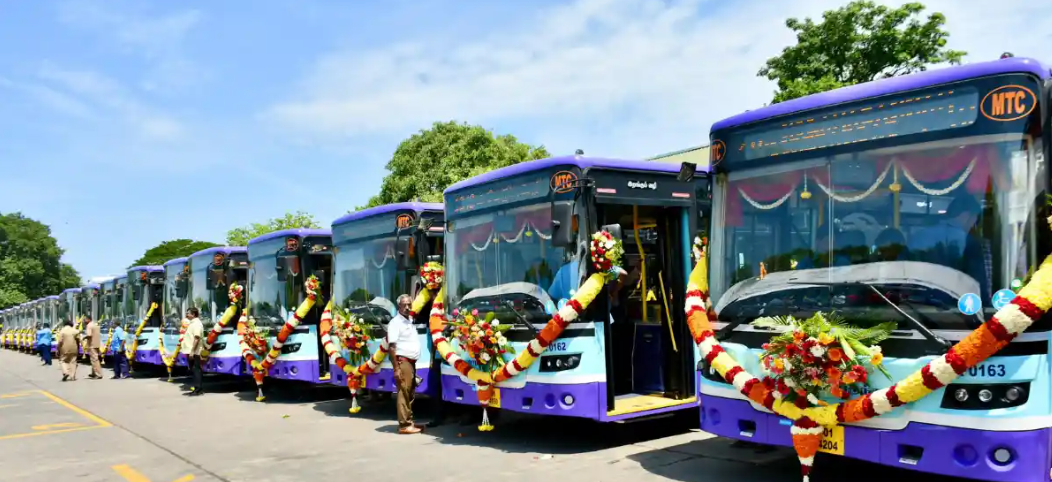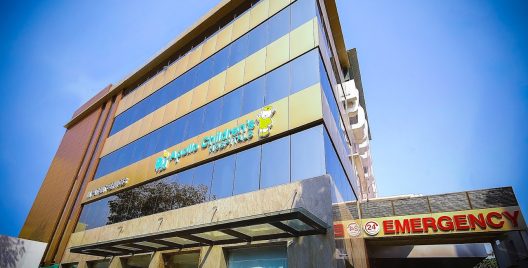From clogged arterial roads to overpacked buses, Chennai’s relationship with public transport has often been one of compromise. But now, a quiet revolution is gathering pace, across buses, trains, streets, and even apps. As the city pushes for cleaner, smarter, and more inclusive mobility, the question looms: is this the beginning of a new era in how Chennai moves?
EV Buses and a Cleaner Commute
The city’s public transport fleet is undergoing a green makeover. The Metropolitan Transport Corporation (MTC) has begun inducting electric buses—many of them air-conditioned—as part of its zero-emission goals. Commuters can already spot them on key routes, offering a quieter and smoother ride. Supporting this shift, charging stations are being installed at major depots and transit points like Koyambedu and Broadway.
The Chennai Metro Rail Limited (CMRL) has also joined the EV movement, piloting electric feeder buses to bridge the crucial last-mile gap between metro stations and nearby residential pockets.
Upgrades on the Rails
For those who rely on suburban trains, there’s good news: AC EMU (Electric Multiple Unit) trains have been rolled out on routes like Tambaram–Chengalpattu. With enhanced comfort and modern passenger display systems, these trains aim to make local travel more appealing.
Major railway hubs like Egmore and Chennai Central are also being modernised under the Amrit Bharat scheme, with improved infrastructure, better accessibility, and digital display systems in the pipeline.
Metro Expansion: Phase II and Beyond
Chennai Metro’s Phase II, a massive 118.9 km expansion, is currently underway. Once operational, it promises to connect underserved areas such as Poonamallee, Sholinganallur, and beyond. The new lines aim to integrate the city’s IT corridors, the airport, and outer suburbs into a more cohesive public transport map.
Efforts are also being made to link metro stations with share autos, cycles, and EV scooters—nudging the city toward a more seamless multimodal commute.
A Boost for Pedestrians and Cyclists
Beyond buses and rails, the city is investing in infrastructure for those who walk and cycle. The Greater Chennai Corporation (GCC) has already redesigned streets in T. Nagar, Adyar, and Besant Nagar with broader footpaths and pedestrian-friendly zones. Initiatives like SmartBike cycle-sharing are being scaled up, and new cycling lanes are in the works, especially around educational and commercial hubs.
Private EV Surge and Policy Backing
Electric mobility isn’t just a public sector story. Chennai’s roads are seeing a rise in private EVs, especially two-wheelers and autos. Battery-swapping stations and fast-charging points are being set up in collaboration with private companies. The Tamil Nadu Electric Vehicles Policy 2023 further positions the state as a manufacturing hub for EVs, encouraging both infrastructure development and job creation.
Digital integration is gaining traction. A ‘Chennai Smart Card’, enabling travel across metro, MTC buses, and suburban trains, is in the trial phase. Meanwhile, live-tracking apps like ‘Chalo’ are helping commuters know bus arrival times in real-time, cutting down wait times and uncertainty.
But Gaps Remain
Despite the momentum, challenges persist. Seamless integration across different modes remains elusive. A commuter switching from bus to metro still needs separate tickets, a frustrating gap in an otherwise ambitious transformation.
Affordability is another concern. With the rise of premium services like AC buses and metro expansions, some fear that lower-income users may be priced out unless fare structures are made more inclusive.
And last-mile connectivity continues to be a sticking point, particularly in outer zones where autos are expensive and feeder services inconsistent.
Is It for Everyone?
As Chennai reimagines mobility, inclusivity must remain central. Are these changes benefiting women, the elderly, and disabled commuters? Are heatwaves and climate resilience being factored into the city’s planning? These questions will determine whether the “new dawn” becomes a shared sunrise, or a segmented one.
From EVs to metro tunnels, Chennai’s transport ecosystem is clearly in transition. The city is taking steps — bold ones — toward sustainability, efficiency, and tech-led convenience. But the real test will lie in execution and equity. Because good transport is not just about speed or style. It’s about access — for everyone, everywhere.














